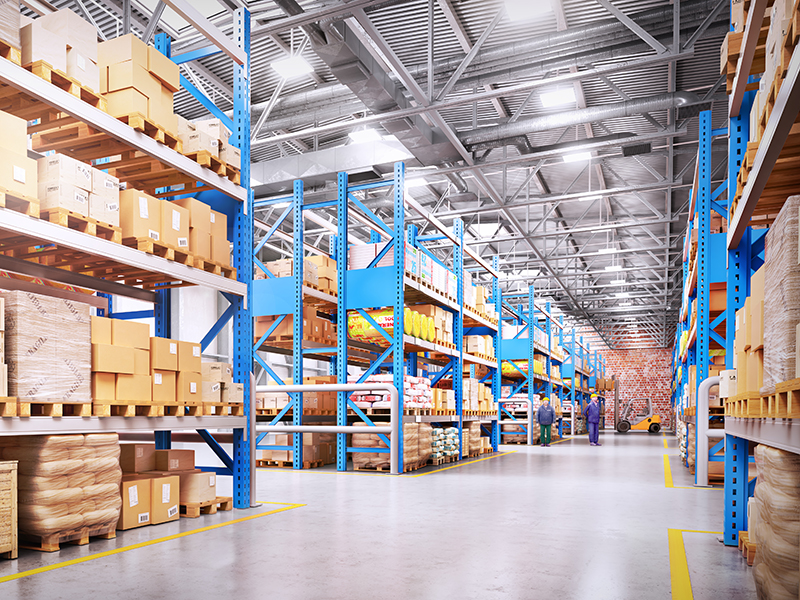
Warehouse safety should be the number one priority for all businesses and employers. Without the right safety measures in place in a warehouse, employees can injure themselves at work with potentially fatal consequences.
Poor safety can also be extremely costly to a business when you factor in sick pay due to accidents and statutory sick pay for injured employees. Not to mention potential damage to the warehouse itself that would need repairing.
Accidents take up a lot of time, from paperwork to legal proceedings, to even shutting down a section of the warehouse. To avoid these timely consequences that are costly to a business, here are some top tips to keep your warehouse a safer environment:
In a warehouse environment, vehicle safety is especially important when it comes to the use of forklift trucks. Forklifts are commonly used in warehouses to help transfer large, bulky items from A to B. To prevent accidents involving these forklifts, as well as other heavy equipment, ensure that only certified employees use them and always follow strict guidelines.
When it comes to the forklift trucks themselves, whether they are diesel or electric, make sure to maintain them in accordance with the manufacturer’s recommendations. Regular servicing is key as well as regular training for staff who operate them.
There should be a strict disciplinary procedure in place if an employee is found to be misusing equipment.
Poor shelving and racking can be really dangerous. Whether it’s old and broken shelving or wrongly installed racking, accidents can occur, which can seriously hurt employees or damage products.
Misuse can also cause issues too. So, make sure that your employees are trained to distribute weight along a shelf, assessing how much weight a specific rack can take, as well as how to stack boxes for effective distribution. This could help to prevent shelves from toppling or breaking and causing serious injury.
You should regularly check your racking is safe and in good working order. If it isn’t, you should replace it as soon as possible
All warehouse areas should be kept clean at all times and free of debris and waste.
Keeping your warehouse tidy is so much more than just an aesthetic benefit. Tidiness is vital for avoiding slips, trips and other accidents that could occur as a result of a messy, unorganised environment. Ensure that your employees always replace equipment, pallets or boxes as well as collectively keeping the warehouse clear.
When unpacking materials, immediately dispose of any debris that could cause slips and falls. And, empty rubbish bins and recycling areas before they fill all the way up to the top.
As an employer, it is your legal responsibility to provide clothing & equipment to prevent employees from getting injured.
Typical PPE in a warehouse includes protective footwear like steel-toed boots, hard hats, masks and eye goggles depending on the work the employee is required to carry out. You should also ensure all employees wear bright high-visibility clothing to help prevent accidents with vehicles. Employees should avoid wearing baggy or excessively loose-fitting clothing that could get trapped in machinery or shelving.
As well as thorough training for all new employees and formal warehouse safety instructions, refresher training and safety awareness should often be revisited. Over time, employees that have been in the position or industry for a long time may forget certain safety aspects or best practices, so it’s always best to keep reminders frequent.
An employee should never attempt to operate any machinery without proper training. They should be especially careful when lifting heavy objects on their own and be offered tools that could help them instead.
It’s also important that employees know the weight restrictions for all storage racks and lifting mechanisms within the warehouse.
Notice boards, regular meetings and signage around the warehouse are all good communication tools to ensure that employees remember safety procedures in the warehouse.
Make sure emergency exits are clearly marked, so everyone knows the quickest route to safety from any location in the facility. Clearly sign where first-aid kits and supplies are kept, as well as fire-safety equipment too.
Employees should be reminded to immediately report any potential safety hazards to supervisors as soon as they are discovered.